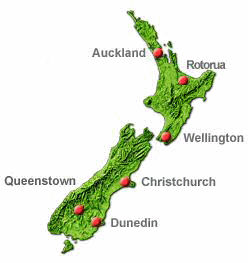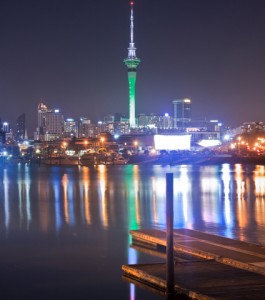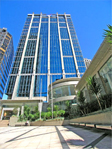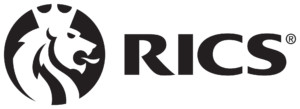
[Updated Oct 2020] A guide to serviced offices and office space to rent in Auckland as well as general information that may be useful if you are thinking of renting office space in the city.
For further offices information or to search office space for rent in Auckland just click. Or contact us for any other query.
History & Geography
New Zealand’s largest city was settled by the Maori in approximately the 14th century. Located on New Zealand’s North Island, the isthmus on which Auckland is located was much prized by the Maori’s for its fertile land. The city lies between the Hauraki Gulf of the Pacific Ocean to the east and the Hunua Ranges in the south-east. To the west and southwest of the city are the Waitakere Ranges and Manukau Harbour. Unusually, Auckland has harbours on two major bodies of water, Manukau Harbour on the Tasman Sea and Waitemata Harbour on the Pacific Ocean. Before the Europeans arrived the Maori population of the area was approximately 20,000, living in fortified villages. With the arrival of Europeans and modern guns however a period of warfare among the Maori tribes began, known as the Musket Wars. In 1840 various Maori chiefs signed the Treaty of Waitingi, giving Britain sovereignty over New Zealand and recognizing the Maori as British subjects. There were many discrepancies however between the English version of the treaty and the translated version which was signed by approximately 500 Maori chiefs. In the same year, the land Auckland is on was given to the British by local Maori chief Ngati Whatua. In 1841 Auckland was declared the capital of a New Zealand. However, this decision was reversed in 1865 when Wellington on the South Island was deemed a better location for the capital. The years between 1845 and 1872 saw the New Zealand Land Wars, a series of conflicts between the Maori tribes and the British settlers over the sale of land to the British. During this time many ex-soldiers were encouraged by the British to settle around Auckland, almost 50 percent of them of Irish extraction. The population of Auckland continued to grow and in 1864 numbered almost 13,000. Roads were built linking Auckland to the south of the island, further enhancing the influence of the city. Trams and railways were constructed in the early 20th century though were soon replaced by cars. Today Auckland is a city of 1,354,900 people with a fairly light population density with most people based in the suburbs surrounding the city.

Climate
Auckland has a warm, temperate climate with warm summers and slightly cooler, damp winters. In general, it has a sunny climate, averaging about 2,060 hours of sunshine per year. The average maximum temperature is 23 degrees Celsius in February and 14.5 degrees in July. Auckland does suffer from smog occasionally, especially in winter, due to the high level of car ownership in the city.
Economy
Auckland has been ranked by the Mercer consulting firm as one of the most affordable cities worldwide based on factors like housing, food, transport, clothing, and so forth. The city was ranked fourth in a recent survey of quality of life in 215 of the world’s largest cities. Auckland is the economic capital of New Zealand and a full 36 percent of the country’s GDP comes out of the city. The city has a high median income and many major corporations have an office in Auckland. Some of the major industries in the city include publishing, design, biotechnology, finance, insurance and IT. Auckland is expecting massive population growth in the next 20 years due to both immigration and natural population increases. By 2031 the population of the city is expected to have grown by 1.9 million people.
Tourism
Auckland, also known as the City of Sails, is a popular destination for tourists. Its climate, location and infrastructure make it an ideal city to visit. New Zealanders love their leisure time and outdoor pursuits and consequently, Auckland offers a host of activities for visitors. Sailing is a vastly popular pastime, with one in three Auckland households owning a boat. With its two harbours and many beaches swimming and watersport activities are a must. The Waitemata Harbour has beautiful swimming beaches at Mission Bay, Takapuna and Devonport. and the west coast has popular surf spots such as Muriwai and Piha. Viaduct Basin is well known for its cafes, restaurants, and clubs and High Street, Ponsonby Road and Queen street are also popular places to see and be seen. For those seeking alternative shopping experiences, Otara’s and Avondale’s flea markets offer a plethora of bargains. The Auckland Art Gallery, the Auckland War Memorial Museum and the National Maritime Museum are all also worth a visit. The Auckland Zoo is considered one of the regions finest, and Kelly Tarlton’s Underwater World is also popular with tourists.
Transport
Most Aucklanders have a private car and this is by far the most popular form of transport in the city and is also the reason for the city’s notorious traffic jams. However, Auckland does have a bus service, though service is skewed towards the Central Business District (CBD) and late-night services are extremely limited. There are train services from the CBD to the most other areas of Auckland however long-distance connections are fairly scarce. Visitors will want to try Auckland’s ferry services which are quite popular for visiting certain destinations in the city.

Office space to rent in Auckland
Much of Auckland’s office space is concentrated around Queen Street, Viaduct Basin and the CBD. However, office space in these areas is also the most expensive in the city. Many financial services firms are located in these areas of the city. However, after the financial crisis, many financial services companies closed their offices in the CBD. Additionally, the building of new office space projects all but ceased. Now as New Zealand’s economy rebounds demand is rising though supply in the next few years in the CBD could be scarce due to the lack of recent development. South Auckland’s industrial zones are where many technical and trade companies have set up their offices. The most significant commercial and industrial areas of Greater Auckland are in the southeast of Auckland City and the western parts of Manukau City, predominantly bordering the Manukau Harbour and the Tamaki River estuary.
Our office space search, advisory and acquisition services are FREE, always. Our Auckland office space brokers and agents are globally regulated by the Royal Institution of Chartered Surveyors (RICS) ensuring the highest standards of commercial property advice and service at all times.
